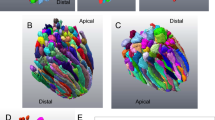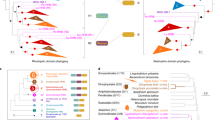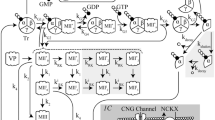Abstract
VISUAL receptor rod outer segments transduce the energy of absorbed photons into nerve signals. These membranous organelles can be isolated in quantities sufficient for biochemical studies, and are a favourable preparation for studying the chemistry of sensory nerve membrane excitation. Unlike other nerve membrane systems they contain an excitable protein component which binds an easily identified prosthetic group. This prosthetic group, 11-cis-retinaldehyde, combines with the protein opsin to form the light sensitive visual pigment rhodopsin. Retinaldehyde has been used as a label in the isolation arid analysis of the opsin protein1–3. Opsins prepared from frog, cattle and rat outer segment membranes by detergent solubilization and column chromatography are now reported to have molecular weights in the range of 27,000 to 40,000 g per mole of retinaldehyde bound3–6. These opsins are thought to constitute a significant fraction of the total protein present in outer segment membranes6–8.
This is a preview of subscription content, access via your institution
Access options
Subscribe to this journal
Receive 51 print issues and online access
$199.00 per year
only $3.90 per issue
Buy this article
- Purchase on Springer Link
- Instant access to full article PDF
Prices may be subject to local taxes which are calculated during checkout
Similar content being viewed by others
References
Bownds, D., Nature, 216, 1178 (1967).
Hubbard, R., Bownds, D., and Yoshizawa, T., Cold Spring Harbor Symp. Quart. Biol., 30, 301 (1965).
Heller, J., Biochemistry, 8, 675 (1969).
Shields, J. E., Dinovo, E. C., Henricksen, R. A., Kimbel, R. L., and Millar, P. G., Biochim. Biophys. Acta, 147, 238 (1967).
Shichi, H., Lewis, M. S., Irreverre, R., and Stone, A. L., J. Biol. Chem., 244, 529 (1969).
Hubbard, R., J. Gen. Physiol., 37, 381 (1954).
Hall, M. D., Bok, D., and Bacharach, A. D. E., J. Mol. Biol., 45, 397 (1969).
Blaurock, A. E., and Wilkins, M. H. F., Nature, 223, 906 (1969).
Spackman, D. B., Stein, W. H., and Moore, S., Anal. Chem., 30, 1190 (1958).
Moore, S., J. Biol. Chem., 238, 235 (1963).
Patchornik, A., Lawson, W. B., and Eitkor, B., J. Amer. Chem. Soc., 80, 4747 (1958).
Matthews, R. C., Hubbard, R., Brown, P. K., and Wald, G., J. Gen. Physiol., 47, 215 (1963).
Bartlett, G. R., J. Biol. Chem., 234, 466 (1959).
Moore, S., J. Biol. Chem., 243, 6281 (1968).
Lolley, R. N., and Hess, H., J. Cell Physiol., 73, 9 (1969).
Toyoda, J., Nosake, H., and Tomita, T., Vision Res., 9, 453 (1969).
Penn, R. D., and Hagins, W. A., Nature, 223, 201 (1969).
Author information
Authors and Affiliations
Rights and permissions
About this article
Cite this article
BOWNDS, D., GAIDE-HUGUENIN, A. Rhodopsin Content of Frog Photoreceptor Outer Segments. Nature 225, 870–872 (1970). https://doi.org/10.1038/225870a0
Received:
Issue Date:
DOI: https://doi.org/10.1038/225870a0
This article is cited by
-
Photoreceptor membrane carbohydrate on the intradiscal surface of retinal rod disks
Nature (1976)
-
Structural Response of Vertebrate Photoreceptor Membranes to Light
Nature (1974)
-
Molecular Weight of Frog Rhodopsin
Nature New Biology (1972)
-
Rhodopsin-like Protein from the Purple Membrane of Halobacterium halobium
Nature New Biology (1971)
-
Die Feinstruktur der tarsalen Schmeckhaare der Fliege Phormia terraenovae Rob.-Desv.
Zeitschrift f�r Zellforschung und Mikroskopische Anatomie (1971)
Comments
By submitting a comment you agree to abide by our Terms and Community Guidelines. If you find something abusive or that does not comply with our terms or guidelines please flag it as inappropriate.



